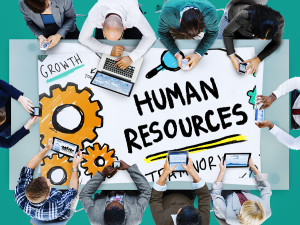 Many small businesses still manage human resources (HR) information manually—that is, paper records are kept either in file folders or in some cases, scanned and retained in a file on someone’s computer. When it is time to look for some information on a particular employee, or gather some data to support an initiative or set salaries for the coming year, there is no easy way to find the data.
Many small businesses still manage human resources (HR) information manually—that is, paper records are kept either in file folders or in some cases, scanned and retained in a file on someone’s computer. When it is time to look for some information on a particular employee, or gather some data to support an initiative or set salaries for the coming year, there is no easy way to find the data.
Additionally, the person responsible for HR (generally the business owner or an “Accidental HR Manager”) finds that they are spending way too much time doing the paperwork involved in the routine, day-to-day activities instead of finding ways to save on employee-related costs, finding and hiring good talent and developing the workforce through training activities.
According to recent research by Ed Lawler and John Boudreau (Center of Effective Organizations), over 50% of an HR department’s time is spent processing information and answering employee questions.
Business challenges escalate the time and energy required by HR managers:
- Limited staff and resources: Many small enterprises have one person responsible for benefits administration, payroll and routine HR administration.
- Managing risk of litigation and compliance: How does one person stay on top of the ever-changing landscape of employment law and ensure that the business is in compliance and protected?
- Managing payroll in an accurate and timely manner: When paychecks are late or have errors, employee morale is damaged and the company bottom line is impacted. HR’s credibility is damaged as well.
The U.S. Department of Labor (DOL) news release for June 2015 data states that private employers spent an average of $31.39 per hour worked for employee compensation. Salaries and wages account for 69.5 percent of the costs, and benefits added another 30.5 percent—this amounts to over 30 percent of the operating costs in a typical organization. It is necessary, then to identify ways to improve results, increase efficiency and lower costs.
![]()
Want to explore how an HRMS can help your small business, but don’t know where to begin? Contact us for HR Solutions that are customized for your business.
![]()
HRMS Technology
Human Resource Management Systems (HRMS) can help manage the time spent on routine HR tasks and mitigate exposure risks. This article is not to tout any particular HRMS system, but to inform the reader of the benefits of at least exploring the possibility of integrating such a system into the management of a business’s human resource function.
HRMS can eliminate much of the routine paperwork, automate many of the manual and time-consuming HR functions and free up the valuable time of those charged with the HR responsibilities.
 For example, HRMS can impact your bottom line by:
For example, HRMS can impact your bottom line by:
- Providing standard processes for key HR activities, organizing all employee benefits, payroll, attendance, training and recruiting information to prevent having to spend time searching for data.
- Reducing the time necessary for data entry, creating reports and resulting in a more efficient operation
- Eliminating duplicate data entry since the information will flow across the system, thereby making you more efficient and productive.
- Helping to avoid fines, penalties and lawsuit threats by ensuring thorough recordkeeping and centralized data.
- Assisting employees to manage their own benefits and make routine changes to contact information and changes to dependent status. It also answers many of an employee’s routine questions about payroll, time off and benefits.
Adaptability of HRMS
Begin with a system that fits your company today and be sure that it will grow with your business. It’s generally easy to expand today’s systems to add functions such as Employee Self Service and benefits enrollment capabilities. Employees appreciate the ability to make choices about benefits packages by comparing costs and coverage among the plans offered. HR can monitor the status of enrollment in real time.
You can even add on-boarding capabilities as your workforce grows and eliminate the tedious and time-consuming task of processing hiring paperwork. When these functions can be handled on-line, applicants, employees and HR are happier. Add to this the elimination of all that paper and you are on your way to being “green.”
Bottom Line
Implementation of an HRMS can have a huge impact on your bottom line, improve your organization’s efficiency and productivity, and bring consistency to your HR processes. This can positively impact employee engagement and morale.
I mentioned earlier that this was not to tout a specific system, but I do want to direct your attention to a few platforms I find work well for small to medium size businesses—take a look at these and decide for yourself:
Improving your bottom line and making your HR processes more streamlined isn’t difficult, and it doesn’t take a lot of money either. If you find your HR processes bogged down and a drain on your time and resources and you are beginning to think about how to use technology to fix this but don’t know where to start, we may have some HR solutions that will get you thinking and moving in the right direction. Contact us to begin the conversation.
Subscribe to Tips and Tools, our newsletter that provides human resources tips to grow your small business.
This article first appeared at M.J. Management Solutions, Inc.
MJ Management Solutions, Inc., is a human resources consulting firm that provides small businesses with a wide range of virtual and onsite HR solutions to meet their immediate and long-term needs. From ensuring legal compliance to writing customized employee handbooks to conducting sexual harassment training, businesses depend on our expertise and cost-effective human resources services to help them thrive.

